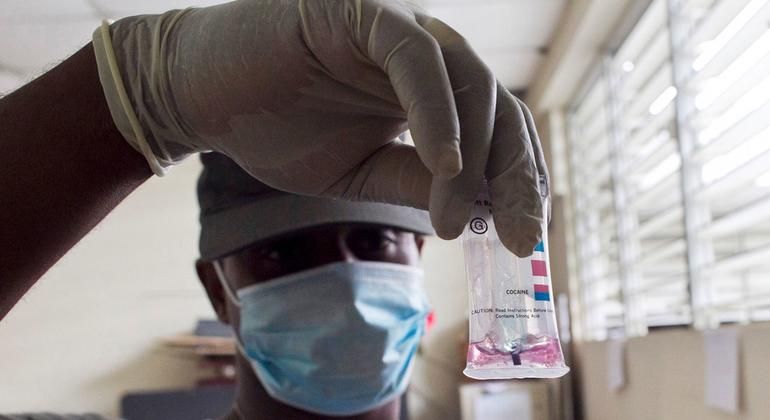The International Day against Drug Abuse and Illicit Trafficking, or World Drug Day, is commemorated each year on June 26 and aims to increase actions to achieve a drug-free world.
This year's campaign recognizes that “Effective drug policies must be based on science, research and full respect for human rights.compassion and a deep understanding of the social, economic and health implications of drug use.”
Ghada Waly, Executive Director of the United Nations Office on Drugs and Crime, said there is a need to provide evidence-based treatment and support to all those affected by drug use “while targeting the illicit drug market.” and much more is invested in prevention.”
New threat from the Nitacenes
Drug production, trafficking and consumption continue to exacerbate instability and inequality, while causing untold damage to people's health, safety and well-being.
— Ghada Waly
In the decade to 2022, the number of people using illicit drugs increased to 292 million, the UNODC report cites.
It noted that the majority of consumers worldwide consume cannabis: 228 million users. The report noted that 60 million people worldwide use opioids, 30 million people use amphetamines, 23 million use cocaine and 20 million use ecstasy.
Furthermore, the UNODC found that there were An increase in overdose deaths after the appearance of nitacenes. – a group of synthetic opioids potentially more dangerous than fentanyl – in several high-income countries.
Try in the Triangle
The drug report noted that drug traffickers in the Golden Triangle, a region in Southeast Asia, have found ways to integrate into other illegal markets, such as wildlife trafficking, financial fraud and illegal resource extraction.
The “displaced, poor and migrant communities” are the most affected by this instability and are sometimes forced to turn to opium cultivation or illegal resource extraction for their survival; this can lead to civilians becoming drug users or falling into debt at the mercy of criminal groups.
environmental consequences
These illegal crimes contribute to environmental degradation through deforestation, toxic waste dumping, and chemical pollution.
“Drug production, trafficking and use continue to exacerbate instability and inequality, while causing untold damage to people's health, security and well-being,” said UNODC's Ms. Waly.
The potency of cannabis has increased up to four-fold in some parts of the world over the past 24 years.
Cocaine increase and cannabis legalization
In 2022, cocaine production hit a record high with 2,757 tons produced, a 20 percent increase from 2021.
The increase in supply and demand for the product was accompanied by an increase in violence in nations along the supply chain, especially in Ecuador and the Caribbean countries. There was also an increase in health problems in some destination countries in Western and Central Europe.
Similarly, harmful use of cannabis increased as the product became legal in Canada, Uruguay and 27 jurisdictions in the United States, much of which was laced with high THC content.
This led to an increase in the rate of suicide attempts among regular cannabis users in Canada and the United States.
Hope for World Drug Day
The UNODC report highlights that “The right to health is an internationally recognized human right that belongs to all human beings.“regardless of a person’s drug use status or whether a person is incarcerated, detained, or incarcerated.”
UNODC calls on governments, organizations and communities to collaborate in establishing evidence-based plans to combat drug trafficking and organized crime.
The office also hopes that communities will help “build resilience against drug use and promote community-led solutions.”












